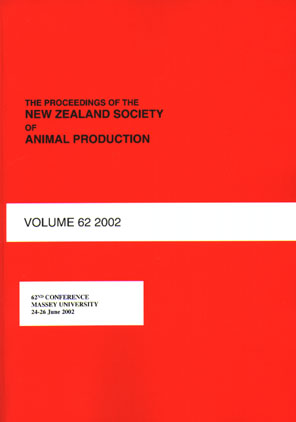Abstract
Rabbit haemorrhagic disease (RHD) was released in New Zealand in the spring of 1997 and has subsequently spread naturally and with the assistance of people to most, if not all, rabbit populations in the country (Parkes et al., 2001). The disease and its impact on rabbit numbers have been described for the initial epidemics in Otago rabbit populations (O’Keefe et al., 1999), in ongoing cross-sectional studies at 10 sites in Canterbury and Otago (Parkes et al., 2001), and in a single longitudinal study in the Manawatu (Henning et al., 2000). In this paper we wish to discuss alternative ways the RHD virus (RHDV) might be transmitted to rabbits, report on the evidence from field and pen trials on various transmission routes, and speculate on the possible routes that fit the observed epidemiological data from our study sites in Otago and Canterbury.
Proceedings of the New Zealand Society of Animal Production, Volume 61, Christchurch, 68-70, 2001
| Download Full PDF | BibTEX Citation | Endnote Citation | Search the Proceedings |

This work is licensed under a Creative Commons Attribution-NonCommercial-NoDerivatives 4.0 International License.

